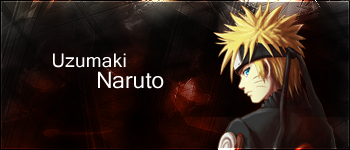Post by Naruto the Fire Shadow on Jul 12, 2006 1:09:10 GMT -5
Chakra Controlling
Chakra is the source of energy used by every Shinobi in the great series of Naruto. In fact, there are two energy sources used by them; Stamina, which could also be called physical energy, and Chakra, which could be called mental energy. As a result, each ninja style uses a different energy source; Taijutsu uses pure stamina, while Ninjutsu and Genjutsu use Chakra. However, chakra has many more uses; it can be concentrated on the user's feet for a boost of speed, or a higher jumping capability. There are also several other things that somebody must acknowledge to fully understand how techniques are executed. First of all, stamina converts to Chakra for many techniques, but not vice versa. This means that once stamina is converted, it cannot be converted back. Also, a hand seal is needed to perform the conversion. One of the toughest parts of using Chakra is controlling it and using it wisely. In this guide, we explain how Chakra should be properly used, and how it is often used improperly.
Hand Seals
Hand seals are as important as Chakra in Naruto. All GenJutsu and NinJutsu need hand seals to be performed, but TaiJutsu doesn't because it simply needs no Chakra. The main function of a Hand Seal is similar to that of magic words. Instead of speaking of words to activate a spell, Hand Seals are used to activate the technique, and release all the gathered Chakra. Hand Seals stand out for animals, specifically the animals found in the Oriental Zodiac signs. That's why there are 12 seals, one for each of the 12 years found in Oriental zodiacs.
This is because if the hand seals in a NinJutsu are not performed correctly, the Chakra will be released wrong and a different effect will occur, probably failing the Jutsu. As a result, Hand Seals need a lot of concentration, which is why techniques in Naruto cannot be interrupted, or the technique will definately fail. In the lines below, we have gathered images of all of the most frequent hand seals.
Ninja Ranks
Becoming an academy student is the first step to becoming a ninja. Usually children are enrolled in the academy from an adolescent age around nine and remain so until approximately twelve. Though there are exceptions where very talented children graduate from the academy at a much younger age. An academy student does not perform any missions, but trains and demonstrates their mastery of the essential ninja skills and techniques (Basic weapon skills, Substitution, Clone, etc.). The final test for graduating to the next rank is performing one of those techniques. Though even if one completes the final test, only nine academy students can become genins, the rest are forced to return to the academy or drop out.
Genin
Genins are the lowest rank of ninja. Once an academy student becomes a genin, they are assigned a jounin instructor with two of their classmates. This group is taught by their jounin and perform basic jobs commissioned by the village. This typically means that they are required to do remedial, labor-intensive jobs that require little or no combat. Two good examples of genin-ranked missions are finding lost pets, and weeding gardens. A genin's life consists of these missions and training, all to prepare for the Chuunin Selection Exam begins. At this point, genins are put through a three part exam that proves their knowledge, survival skills, and combat ability. During the final combat part of the exam, the genins are evaluated on whether or not they have the needed skills to be promoted to chuunin. However, it is not uncommon to have a very small number of genins selected.
Chuunin
Upon achieving the rank of chuunin, a great deal of responsibility is placed upon the ninja. A chuunin is no longer an apprentice, but a leader. They can command a small group and are actively involved in combat situations. A chuunin not only holds their own life in the balance, but those of ninja assigned under them. Chuunin's responsibilities do not only extend to battle, however. They are also teachers of academy students, imparting their experience and abilities onto the next generation. They are in charge of teaching the students all they need to know to begin their journey of becoming ninja, and basic physical training. Becoming a chuunin is a sign of skill of dependance, and is not something easily obtained.
Jounin
Even as achieving chuunin demonstrates proficiency and skill, achieving jounin is a sign of mastery. Jounins are exceptional fighters who operate on a completely different level than their lower ranked counterparts. Because of this, they are given the most dangerous missions. Jounins also are not limited to battle. While chuunins are in charge of teaching academy students, jounins are responsible for trios of genins. A jounin leads the groups through their initial missions and prepares them for the Chuunin Selection Exam. Jounins typically only impart knowledge to their assigned genins, though there are some who take on special students and impart techniques and skills to them as well. Not much is known about the methods of promoting jounins, however.
Kage
There are many academy students, there are many genins, many chuunins and many jounins, but there is only one Kage. The Kage is the strongest and most supreme ninja of all ninjas in their respective villages. Despite what some may assume because of appearances, they are immensely powerful and hold a number of powerful techniques that can even control nature itself. Becoming Kage is the ultimate level of mastery and skill. Each of the hidden villages have their own Kage, with a different name. Ho (Fire), Kaze (Wind), Rai (Lightning), Mizu (Water), and Tsuchi (Earth).


